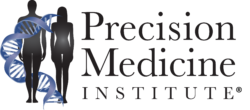Trends affecting hospitals and health systems worldwide are forcing them to alter how they are structured and how they deliver care. We look at six trends from a recent report from McKinsey and Company-then add our take on how precision medicine factors into each trend
As new challenges threaten the survival of many hospitals worldwide, hospital and health system executives are being compelled to transform their organizations. The challenges confronting hospitals are spelled out in a recent report from management consulting firm McKinsey and Company with the provocative title, “The Hospital Is Dead, Long Live the Hospital!“
A team of analysts led by McKinsey senior partner Penny Dash, MB BS, MSc, looked at trends affecting hospitals in North America, Europe, Asia, and other regions. These trends, the authors contend, will force hospitals to make changes in how they are structured and how they deliver healthcare. Though precision medicine was not one of the trends McKinsey cited, we see key elements of precision medicine in many of them. Shrewd hospital leaders know that genetic testing in support of clinical care is a coming wave-and that the benefits go beyond oncology.
Here are six trends from the report-plus our take on how precision medicine factors into each:
1. The Population Is Aging with Complex Needs, Higher Cost of Care
“Patient populations are getting older, and their needs are becoming more complex,” McKinsey reports, and this is imposing higher cost burdens. The U.S. Census Bureau projects that by 2030 approximately 20% of the US population will be 65 or older compared with about 15% in 2016.
The federal Centers for Medicare and Medicaid Services (CMS) reports that older adults (65 and older) account for a disproportionate share of healthcare costs-56%. For 2014, CMS reported, per-capita healthcare spending averaged about $19,015 for older adults compared to an average of $7,148 for working-age adults 19-64.
Our take: One way to manage per-capita spending is to invest in programs that provide for genetic testing and targeted treatments, thus moving away from trial and error medicine. Treating the right patient with the right drug the first time has the potential to save over the long term, particularly when you factor in the widespread use of non-beneficial treatments that occur near the end of life. Investing in targeted therapy earlier should lower per-capita spending.
2. Patients Are Behaving More Like Consumers
“Patients-along with their families and caregivers-expect to receive more information about their conditions and care, access to the newest treatments, and better amenities,” McKinsey reports.
Our take: Indeed, consumerism/patient satisfaction is a top-of-mind worry for hospital and health system executives, as noted recently in a survey conducted by the American College of Healthcare Executives (ACHE) and in a report from ECG Management Consultants . As consumers gain more of a say in where they receive treatment, and their satisfaction scores impact hospitals, those whose service lines offer the benefits of precision medicine will likely stand out. This is particularly important in light of the fact that consumers are demanding access to genetic testing because it can lead to earlier diagnosis, according to Global Market Insights, Inc.

“Patients-along with their families and caregivers-expect to receive more information about their conditions and care, access to the newest treatments, and better amenities,” says a report from McKinsey and Company. A team of analysts led by McKinsey senior partner Penny Dash, MB, BS, MSc, analyzed trends affecting hospitals. (Photo courtesy of The King’s Fund.)
3. Community-Based Outpatient Care Is on the Rise
Clinical advances are increasing the range of treatments that can be performed in outpatient settings, McKinsey reports. The authors point to multiple studies suggesting that patients can receive better outcomes when more care is delivered outside the hospital.
Our take: Precision medicine’s advances in oncology include inroads made in the community setting, as reported by researchers who presented their findings at a recent American Society of Clinical Oncology (ASCO) conference. This success is a potential bellwether as other diseases and conditions benefit from new precision medicine developments, and patients have the potential to receive care where they prefer to get it-outside the hospital.
4. Significant Clinical Advances, But at What Cost-and Who Will Pay?
Better treatments and greater understanding of disease causes have led to significantly lower mortality rates for many conditions, McKinsey reports. But the authors add that high costs for new therapies are forcing payers to contend with questions about whether to fund them.
Our take: Reimbursement is an acknowledged barrier to implementation of precision medicine programs and will continue to be a challenge for the foreseeable future. However, stakeholders are searching for solutions, as evidenced by a recently-published paper in the April 2019 edition of Annals of Oncology. Explored there is a risk-sharing model for biomarker-driven treatment of rare subgroups of patients with cancer. Another article published in September 2019 in Precision Oncology proposed value-based, tiered reimbursement for tumor biomarker tests.
5. Digital Technologies Are Making Their Mark
The McKinsey report identifies five ways in which digital technologies are having an impact on hospitals:
- Automation of manual tasks;
- More patient interaction with providers;
- Real-time management of resources, such as use of hospital beds;
- Real-time clinical decision support to enable more consistency and timeliness of care; and
- Use of telemedicine applications to enable care for patients in remote locations.
Our take: Digital advances are helping to bring precision medicine to the bedside faster. Dramatically increased computing processing power clears the path to meaningful analytics interpretation and clinical implementation. Additionally, as noted in the January 2019 issue of Diabetologia, mobile health tools are “capable of delivering precision medicine, as it allows personalization for different patients and collects frequent physiological and usage data to inform individualized analyses.”
6. Greater Reliance on Quality Metrics
McKinsey cites regulations in Canada, Scandinavia, and the UK that require hospitals to publish quality measurements such as mortality, readmittance, and infection rates. These metrics are sometimes linked to pay-for-performance programs, the report states. In the US, Medicare regularly uses quality-of-care metrics to determine reimbursement.
Our take: Pay-for-performance programs are typically tied to achieving desired outcomes and cost savings in a time window that is not realistic for many precision medicine treatments-improvement is typically seen after the window closes. But there are signs that this window may stay open longer. For example, in 2018 the American Medical Association (AMA) released a report “Integrating Precision Medicine into Alternative Payment Models.” The report encourages developers of alternative payment models “to consider the value of precision medicine and to integrate precision medicine approaches into patient care where appropriate and when recommended by national medical specialty societies.”
The McKinsey report reveals that several trends in healthcare are forcing healthcare leaders to adopt new strategies for success. The report’s authors state that their “results show that contemporary healthcare providers around the world are facing several urgent imperatives: To strengthen clinical quality; increase the delivery of personalized, patient-centered care; improve the patient experience; and enhance their efficiency and productivity.”
-Dean Celia
Related Information:
The Hospital Is Dead, Long Live the Hospital!
The Nine Forces Changing the World for Hospitals
Older Adults Projected to Outnumber Children for First Time in U.S. History
CMS: Health Expenditures by Age and Gender
Session at ASCO Shows Community Oncology Success in Precision Medicine
Barriers to Implementation of Precision Medicine for Cancer Treatment in the U.S. Healthcare System
Integrating Precision Medicine into Alternative Payment Models
